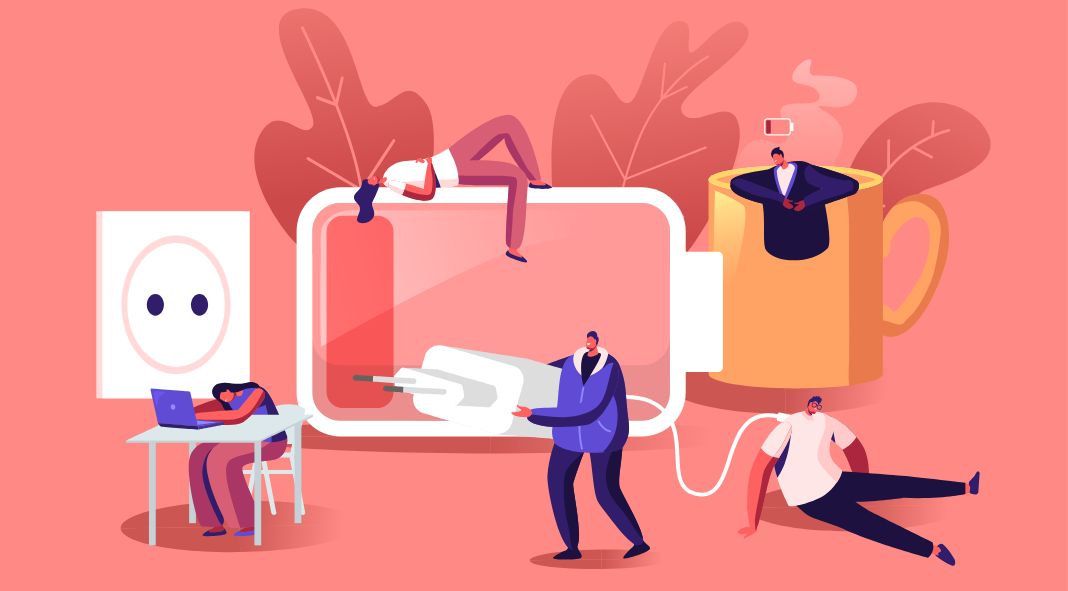Creative burnout is a pervasive challenge for artists and designers who face high expectations, tight deadlines, and the constant pressure to produce original and innovative work. The toll is not just on your physical and mental health but also on your passion and motivation for your craft. Fortunately, there are several strategies that can help you prevent or recover from creative burnout. In this article, we’ll explore these strategies in detail.
1. Set Boundaries and Prioritize Life
One of the essential tips from creators to avoid burnout is to establish clear and realistic boundaries between your work life and personal life. This includes creating a dedicated workspace, limiting work hours, turning off notifications, and learning to say no to unreasonable requests. By doing so, you can maintain a healthy balance between your professional and personal obligations, preventing feelings of being overwhelmed or resentful.
2. Be Selective and Intentional with Your Projects
Being selective about the projects you take on, the platforms you use, and the audiences you cater to is crucial. Not every opportunity aligns with your values, goals, or interests. Prioritize projects that matter most to you, focusing on quality over quantity. By being intentional and selective, you can avoid spreading yourself too thin and compromising your standards.
3. Take Regular Breaks
Taking breaks is essential to avoid burnout, allowing you to rest, recharge, and refresh your mind and body. Whether short or long, breaks can include activities like meditating, reading, exercising, or spending time with loved ones. Switching between different types of tasks during breaks helps prevent mental fatigue and boredom.
4. Allow Flexibility in Your Work Process
To prevent burnout, give yourself some flexibility and freedom in your work process. Set achievable goals, prioritize tasks, delegate or outsource when possible, and adjust expectations or deadlines as needed. By doing so, you can reduce stress, increase your sense of control, and maintain a healthier work environment.
5. Find a Productivity System That Works for You
Having a personalized productivity system helps you manage your time, track your progress, and optimize your output. Experiment with various tools like calendars, planners, apps, and timers to find what suits your personality and needs best.
6. Reframe Your Perception of Work
Reframing how you perceive your work can significantly impact how you feel about it. Instead of viewing it as a source of stress, focus on the positive aspects, such as the value it brings to yourself or others, the skills it helps you develop, and the opportunities for growth and recognition.
7. Reevaluate Your Priorities
Burnout can be a signal that it’s time to reassess your life and career. Consider if your current path aligns with your interests and values. Explore new opportunities or passions if you feel stuck. Seeking professional help or support is also a valid option if you’re struggling emotionally.
8. Support Your Mood and Energy with a Healthy Diet
Your diet directly impacts your mood and energy levels. Maintaining a balanced diet with fruits, vegetables, whole grains, lean proteins, and healthy fats is vital. Avoid excessive consumption of junk food, processed food, sugar, caffeine, or alcohol, as these can lead to inflammation, fatigue, and mood swings.
In conclusion, preventing creative burnout involves setting boundaries, being selective with projects, taking breaks, allowing flexibility, finding a productivity system, reframing your perception of work, reevaluating priorities, and maintaining a healthy diet. Implementing these strategies can help you sustain your passion and creativity while preserving your mental and physical well-being as a creative professional. Sit back and find creative inspiration in our Art and Design categories.
Header image by Pavlo Syvak via Adobe Stock.
Subscribe to our newsletter!

















